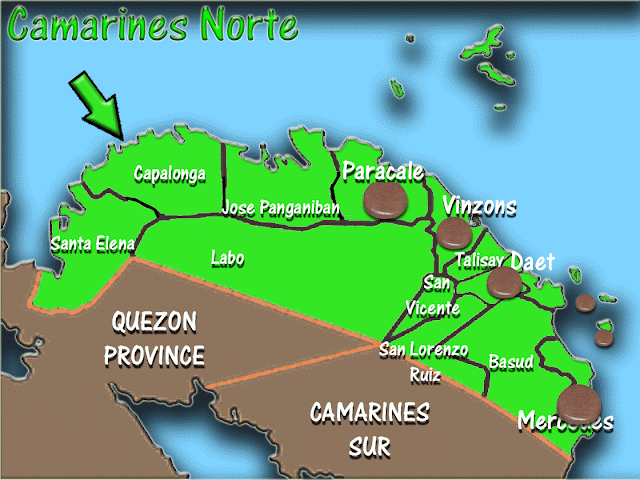Traveling from Naga City to Camarines Norte took nearly three hours. We had to cross one province to another (from Camarines Sur to Camarines Norte), we had to pass four towns (Milaor, San Fernando, Sipocot, and Pamplona), and we even had to drive over a misty-curved mountain. It was woozy and exhausting, but definitely worth the wait.
Since Camarines Norte belongs to the second type of climate with no dry season and with a very pronounced maximum rain period from November to January, 1 it was expected that we would have a cold-wet trip — just the perfect moment in time to sit back, relax, and enjoy the view of the towns ahead and Camarines Norte itself.
It was an amazing scene; the streets of charming small towns throbbing with busy tricycles, jeepneys and bustling people, the exceptional St. Anthony of Padua, Mercedes Church, the promising dive sites and world-class surfing, the elegant looking bays that open into the Pacific, and the exquisite picture-perfect beaches — a scene like no other. 6
This exhilarating province is located in the northwestern coast of the Bicol Peninsula, forming the southeastern section of Luzon, with a population of 513, 785 as of CY 2007. 2 It is one of the six provinces that make up the Bicol Region bounded by the Pacific Ocean and San Miguel Bay, in the west of Lamon Bay, and in the south by Quezon province and the adjoining province of Camarines Sur. It is subdivided into 12 municipalities namely; Basud, Capalonga, Daet (Capital Town), Jose Panganiban, Labo (Largest Municipality), Mercedes, Paracale, San Lorenzo Ruiz, San Vicente, Santa Elena, Talisay and Vinzons. 1
Camarines Norte is known for being one of the richest coastlines in the Philippines — the bounty of nature facilitating the economic development. 3 The citizens of Camarines Norte have a mixed type of economy. In the rural areas, the people depend on agriculture-related activities such as rice growing, coconut and pineapple production augmented by livestock and poultry raising. In coastal barangays, such as Bagasbas, Gubat and Mambalite, 4 the people rely on fishery-related activities. In urban or poblacion areas, the people are engaged in service, trade and commerce activities. In areas near mining sites, the people count on Gold Jewelry production. 5 And last but not the least comes from the exquisite native delicacies and food products; bagoong, balaw and native anchovies, patis, other fish sauce, and the not-so-famous but tremendous Dinailan. 5
